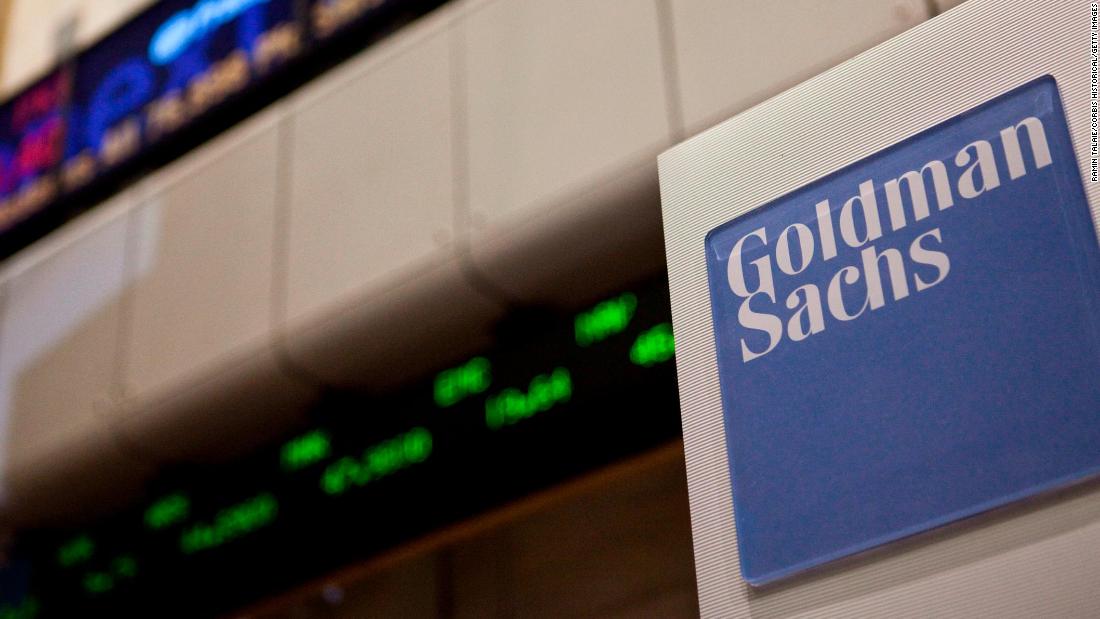
But Goldman Sachs thinks the October market scare -- the S&P 500 plunged as much as 9% from its record high -- has gotten out of hand.
Yes, economic and profit growth are likely to lose steam over the next year. But the US economy still looks healthy. Economists don't foresee an imminent recession.
"The sell-off appears to have overshot the fundamentals," Goldman Sachs chief US equity strategist David Kostin wrote to clients after Friday's closing bell.
The recent market mayhem was swift. Despite Monday's rebound, the Nasdaq is down a stunning 10% in October. If that loss holds, it would be the Nasdaq's worst since November 2008. Highflying stocks are down much more. Amazon (AMZN) and Netflix (NFLX) have each plunged about 19% in October.
The foundation for the October market scare was laid in September. Investors became too euphoric about growth, driving valuations up to unsustainable levels.
The sudden spike in Treasury yields forced the markets to quickly adjust. Worries about trade wars and disappointing earnings added further pressure to stocks. The Fear & Greed Index, a CNN Business gauge of market sentiment, flipped from "greed" in September to "extreme fear."
Too negative?
Even though some economic and earnings reports have fanned the fears of a sharp slowdown, Goldman Sachs expects "positive" economic data to continue. The firm predicts the S&P 500 will recover to 2,850 by year end, representing a significant rebound of 7% from Friday's close.
"We believe the market has moved past fair value," Kostin wrote.
In other words, the pendulum swung too far into pessimism.
Rather than a sharp economic slowdown, Goldman Sachs economists are calling for "gradually decelerating" US GDP growth from 3.5% in the third quarter to 1.6% at the end of 2019.
Investors have also grown worried that the Federal Reserve may be raising interest rates faster than the economy can handle. Higher borrowing costs are already slowing home and auto sales. The SPDR S&P Homebuilders ETF (XHB) plunged nearly 30% since late January. Ford (F) has lost about a third of its value over that span.
Ed Yardeni, president of Yardeni Research, said the Fed may need to pause rate hikes and monitor how the economy responds to higher borrowing costs.
"The plunge in stock prices," Yardeni wrote to clients on Monday, "suggests that the economy may not be as strong as the Fed perceives."
More room to fall?
Some analysts believe the market may have to tumble further in response to a looming slowdown in earnings growth.
S&P 500 earnings per share growth is projected to peak in the fourth quarter at 23% and decelerate to around 9% at the end of 2019, according to CFRA. The loss of momentum is being in driven in part by the waning impact from the tax cuts.
CFRA found that most peaks in earnings growth since 1951 have been accompanied by bear markets or by corrections. The S&P 500 has not yet closed 10% lower from its peak.
"We think this decline will become a mild-to-medium correction," Sam Stovall, chief investment strategist at CFRA, wrote to clients on Monday. "We don't anticipate a new bear market."
The recent market turmoil marks the second decline of 5% or more for the S&P 500 so far this year. In the 26 years since World War II that twin 5% declines have occurred, the second decline was typically deeper than the first, Stovall found.
Buybacks to the rescue
Even if the market slump deepens, Wall Street is welcoming a powerful buyer coming off the sidelines: Corporate America.
The market mayhem coincided with a "blackout" in share buybacks. Companies typically avoid repurchasing shares during the two weeks prior to reporting earnings. That's a big deal because Corporate America has been the biggest buyer of shares since 2009.
But Goldman Sachs estimates that 48% of S&P 500 companies are now out of their blackout windows. UBS predicts that buybacks and dividends will total $170 billion over the next month, tripling the level of the past four weeks.
That could be just what the bull market needs to get back on track.
No comments:
Post a Comment